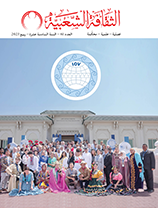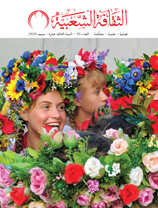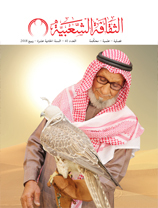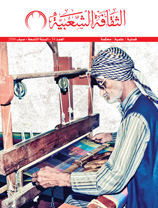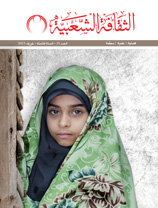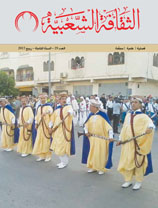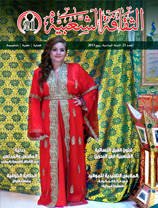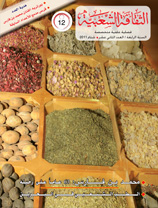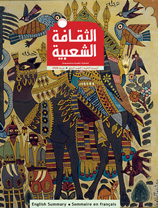The Gift: Framework of Reference and Practice (Al-Daih Village in Bahrain as an Example)
Issue 8

Prepared by: Khadeeja Al-Mawlani (Bahrain)
Revised by: Dr. Noor Al-huda Badis
This study is concerned with Daih, a village situated in the northern region of the Kingdom of Bahrain. As in any other village of Bahrain, the people of Daih are committed to their customs and traditions and hence are used to perform religious rituals and festivals in different spiritual occasions. It also seeks to define the concept of “Gift”, to specify the different types of gifts, to name the occasions, in which they are given, and to unveil beliefs about gifts and the objectives that people wish to achieve while offering a certain gift. The author stresses that the gift plays an important role in the social life of many people worldwide. It is a life style that is spread in both the primitive and modern societies and that has an indirect effect on the social interaction between individuals and groups. The gift is a basic social phenomenon that helps preserve social cohesiveness and cooperation between people. Based on the results of the study, the author drew the following conclusions:
1-Exchange of gifts in the society is more frequent among relatives, family members and friends; however, its level largely diminishes whenever the level of relationships between the members of the society decreases.
2-The gift enhances the social interaction and communication, increases the power of social relations, and contributes to the continuity of relations among individuals and societal groups.
3-When accepting the gift, members of the society adhere to the Sunna of Prophet Mohammed and are keen to encourage the process of giving and receiving gifts that leads to the strength of solidarity in the society.
4-The price of the gift is highly related to the status of the presentee; the more he or she is cherished, the more is the price of the gift.
5-The occasion, in which the symbolic gifts are most frequently exchanged between the study participants, is the death occasion (deceased’s gifts).
6-The most frequently presented gift, especially in the summer season, is the gift offered by the people who have just arrived from the Holy Lands. People appreciate such gifts for the sake of getting the blessing of them.
7-The exchange of gifts among the participants of the study takes place in both the visible and the invisible words.
8-The level of appreciation of the gift by the presentee does not depend on its price but on how strong or weak the relationship between the presenter of the gift, on the one hand, and the presentee, on the other hand.
The presentee may consider the gift given by the presenter as an element of pride or show-off, as some people put it, namely if the gift is offered directly or if it is a highpriced or equally extremely expensive for both of them. In this case, the person who offers the gift tries to pretend that his or her financial status is high, and that he or she shops in prestigious places. The presenter also wants to show that the presentee’s status is lower than his or her level. From another point of view, the gift changes the way the presentee perceives the presenter; it might change sensations, eliminate spite, and strengthen the relationships between individuals and people. The prominent western scientist Marshall Sahlins delivered this sense of the gift when he said: “If friends exchange gifts, gifts are what make friends”.











